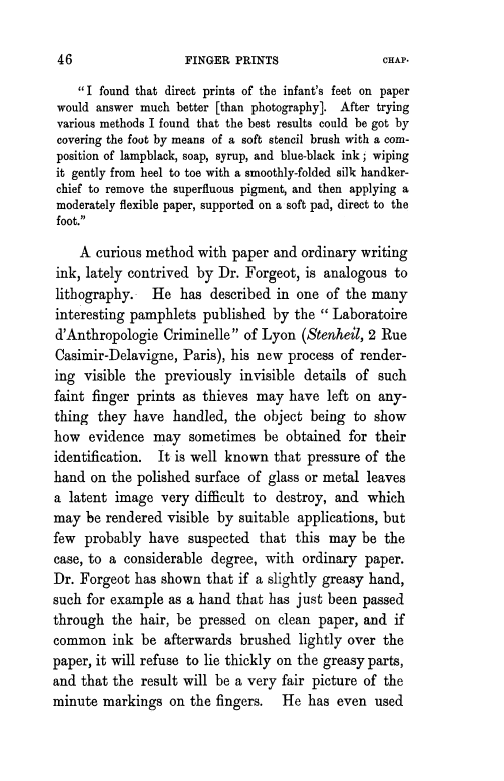4 6 FINGER PRINTS
CHAP
"I found that direct prints of the infant's feet on paper would answer much better [than photography]. After trying various methods I found that the best results could be got by covering the foot by means of a soft stencil brush with a composition of lampblack, soap, syrup, and blue-black ink ; wiping it gently from heel to toe with a smoothly-folded silk handkerchief to remove the superfluous pigment, and then applying a moderately flexible paper, supported on a ' soft pad, direct to the foot."
A curious method with paper and ordinary writing ink, lately contrived by Dr. Forgeot, is analogous to lith ography. ~ He has described in one of the many interesting pamphlets published by the " Laboratoire d'Anthropologie Criminelle " of Lyon (Stenhei2, 2 Rue Casimir-Delavigne, Paris), his new process of rendering visible the previously invisible details of such faint finger prints as thieves may have left on anything they have handled, the object being to show how evidence may sometimes be obtained for their identification. It. is well known that pressure of the hand on the polished surface of glass or metal leaves a latent image very difficult to destroy, and which may be rendered visible by suitable applications, but few probably have suspected that this may be the case, to a considerable degree, with ordinary paper. Dr. Forgeot has shown that if a slightly greasy hand, such for example as a hand that has just been passed through the hair, be pressed on clean paper, and if common ink be afterwards brushed lightly over the paper, it will refuse to lie thickly on the greasy parts, and that the result will be a very fair picture of the minute markings on the fingers. He has even used
